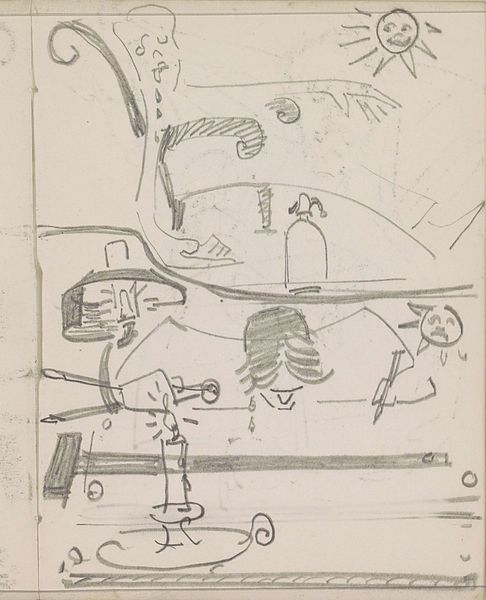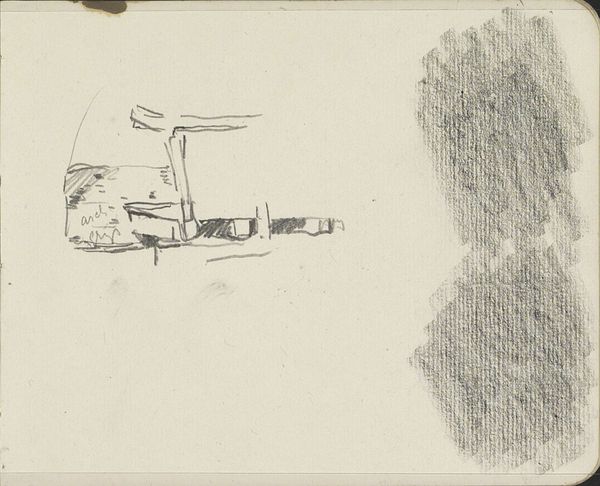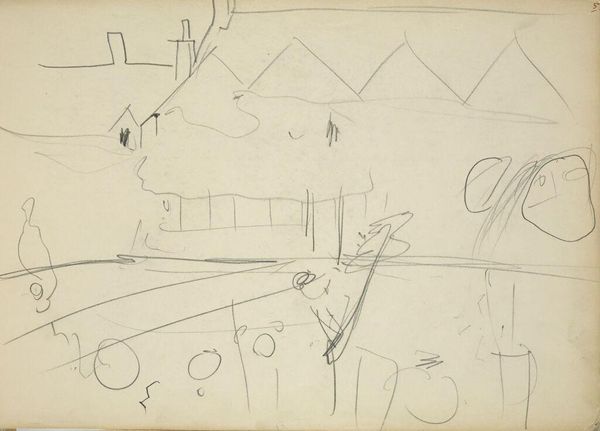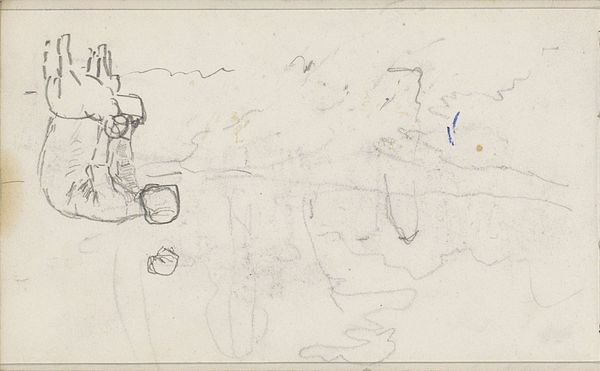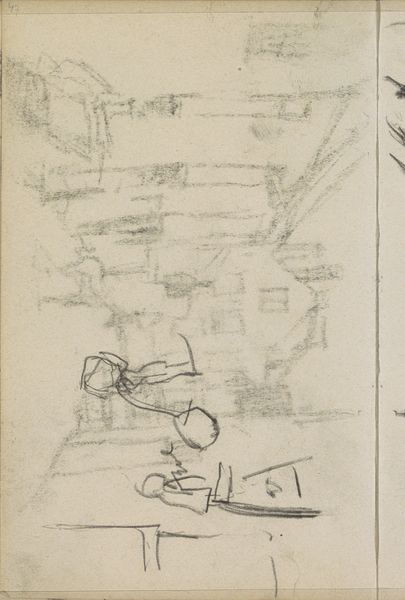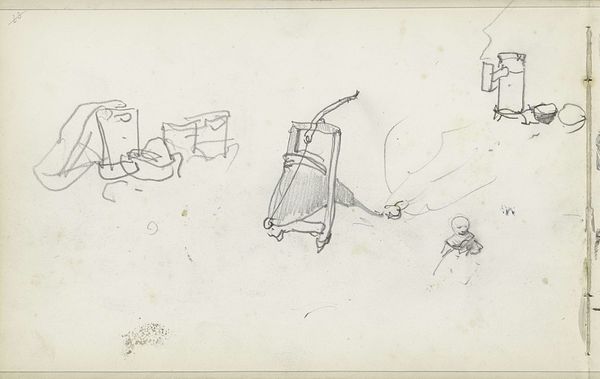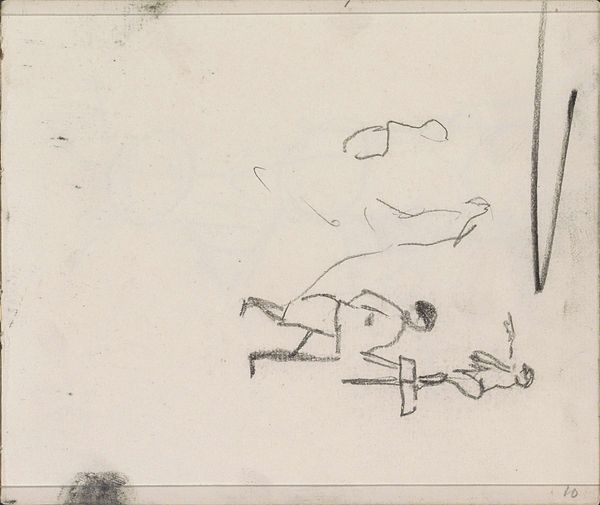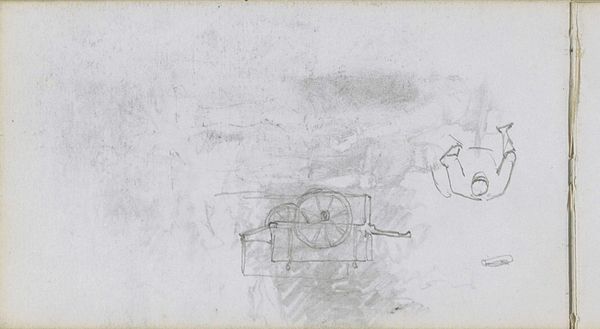
drawing, paper, ink
#
drawing
#
aged paper
#
toned paper
#
pen sketch
#
hand drawn type
#
paper
#
abstract
#
personal sketchbook
#
ink
#
ink drawing experimentation
#
geometric
#
pen-ink sketch
#
expressionism
#
line
#
pen work
#
sketchbook drawing
#
sketchbook art
Copyright: Public Domain: Artvee
Editor: So, here we have Paul Klee’s “Belebter Strand,” made in 1926. It’s an ink drawing on paper. My first thought is how whimsical it feels, like a child's imaginative sketch of a beach scene. What do you see in this piece, looking at it from a historical perspective? Curator: Well, this sketch gives us a fascinating glimpse into Klee's process, beyond just a finished artwork. The title translates to "Animated Beach," but the animation is quite abstracted. We have figures, vehicles, and geometric forms scattered across the aged paper. Considering its time, 1926, post-World War I Germany, think about the public’s changing relationship to leisure and technology. Do you see evidence of that shift here? Editor: I see the abstracted forms of maybe cars or some kind of machines… almost toys. But I guess I didn't connect them to larger social shifts at the time. Curator: Exactly. Klee often used childlike imagery to comment on the complexities of modern life. It wasn’t merely decorative or escapist. The scattered elements, the ambiguous forms… they might reflect a society grappling with rapid industrialization and the changing role of art itself. It is interesting how his Bauhaus colleagues promoted art as an industrial product, against his idea to free art making. Editor: That’s a great point about art’s role! So, it's not just a beach scene, but a reflection on societal changes using a simplified, almost innocent visual language. The institutional structure of Bauhaus really shaped Klee’s artwork. Curator: Precisely. Klee, while teaching at the Bauhaus, was critically examining modern art's role and engagement with the contemporary public through his distinctive personal iconography. Considering this drawing within the history of early 20th century art helps us understand the push and pull between pure aesthetics and social commentary. Editor: Wow, that gives me a totally new perspective! I came in seeing just a quirky sketch, but I am leaving with new questions about how an artwork and an artist engage with its surrounding society.
Comments
No comments
Be the first to comment and join the conversation on the ultimate creative platform.
